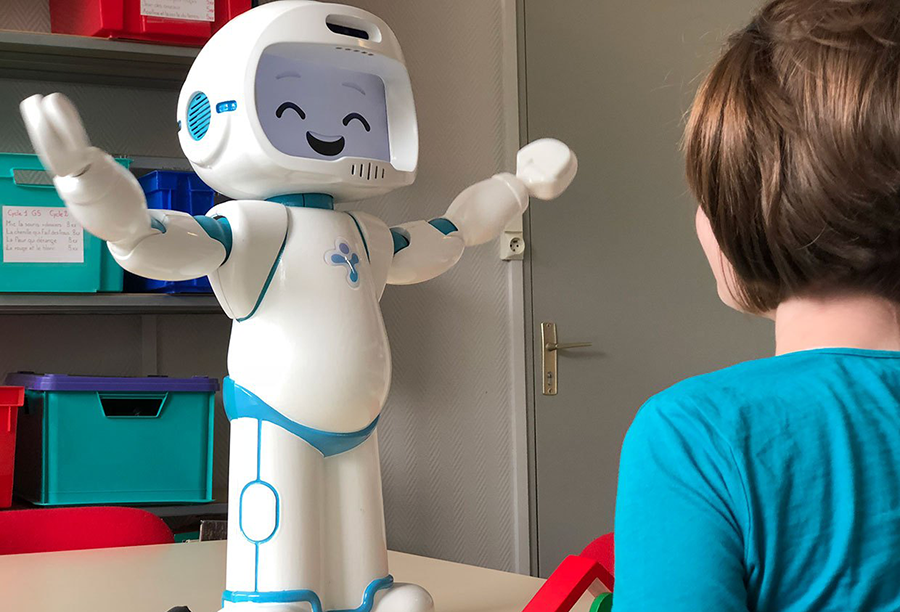Autism is a developmental disorder that appears in early childhood. It is the most common condition in a related constellation of disorders known as autism spectrum disorder (ASDs). Autistic children might feel overwhelmed with face-to-face interaction, thus find it difficult to pay attention, communicate verbally, or control their stress and anxiety. These difficulties can affect their social life and their success in school.
Now, a team of researchers from robotics startup LuxAI have created QTrobot, a robot designed to help children with autism learn important social skills. The researchers plan to present the results of a QTrobot study at RO-MAN 2018, a symposium on robot and human interactive communication, on August 28.
“The robot has the ability to create a triangular interaction between the human therapist, the robot, and the child,” co-founder Aida Nazarikhorram told IEEE. “Immediately the child starts interacting with the educator or therapist to ask questions about the robot or give feedback about its behavior.”
This cute QTrobot is just over two feet tall. It has a humanoid body and a screen where a person’s face would be. Not only can the bot see, hear, and talk, it can also communicate non-verbally, projecting facial expressions onto its screen and gesturing with its body.
The researchers observed that the robot reduces the number of times children flap their hands.
As the robot is “embodied,” it is a better choice for children than an app or tablet. The researchers also discovered that it draws attention and improves learning, especially when compared to a standard iPad/educational app pairing. In other words, children play with tablets and work with robots, reports TechCrunch.
The study
For their study, the researchers recruited 15 ASD-diagnosed children between the ages of 4 and 14. All the children were engaged in two interviews, each less than 5 minutes long, one with QTrobot and the other with a human.
During these interviews, the children were asked their names and three questions about themselves. Then, the researchers told each child a short story and asked the child if they liked it. Finally, the child was asked to imitate the interviewer as they made four gestures (for example, lifting their right arm).
The team found that the children looked at the QTrobot for longer and imitated it just as much as they did the human. The children were also observed to engage in fewer repetitive or stereotyped behaviors while interacting with the bot.
Read more Virtual Reality Help Kids Overcome Fear of Immunization
IEEE asked Nazarikhorram if it’s possible that pairing robots with children with autism could actually move them further away from people, and closer to technology. “That’s one of the fears that people have,” she said. “But in practice, in our studies and based on the feedback of our users, the interaction between the children and the therapists improves.”













